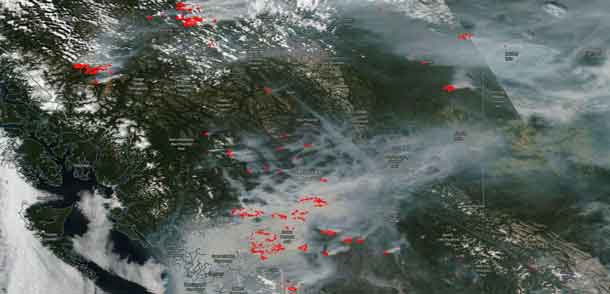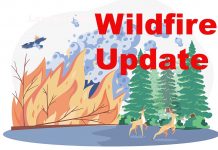
British Columbia is on fire. In this Canadian province 56 wildfires “of note” are active and continuing to blow smoke into the skies overhead.
Current statistics (from the BC Wildfire Service) show that 629,074 total hectares (1,554,475.71 acres) have burned this year in British Columbia. Specifically, in each province, the Coastal province has had 86,116 hectares burn. Northwest has had 310,731 ha. burn. Prince George has had 118,233 ha. burn. Kamloops has had 38,019 ha. burn. The Southeast has had 35,639 ha. burn and Cariboo have had 40,336 ha. burn.
The weather, as in the western U.S., has had a significant role in the 2018 wildfire situation. Hot, dry, and windy conditions create a breeding ground for wildfires to start and spread. With just a lightning strike or a poorly tended campfire, these weather conditions allow those quick-start fires to spread rapidly and become out of control before they are even discovered.
Besides the very obvious hazards of fire, there is the secondary hazard of smoke across the region. Smoke now blankets the sky above British Columbia and will be blown eastward by the jetstream. This smoke causes hazardous air quality wherever it travels. The map below shows the air quality index for the British Columbia region for August 22, 2018. Residents who either smell the smoke or notice haze in the air should take precautions.
NASA’s Earth Observing System Data and Information System (EOSDIS) Worldview application provide the capability to interactively browse over 700 global, full-resolution satellite imagery layers and then download the underlying data. Many of the available imagery layers are updated within three hours of observation, essentially showing the entire Earth as it looks “right now. This satellite image was collected on Aug. 21, 2018. Actively burning fires, detected by thermal bands, are shown as red points. Image Courtesy: NASA Worldview, the Earth Observing System Data and Information System (EOSDIS). Caption: Lynn Jenner with information from British Columbia Wildfire Service website.






